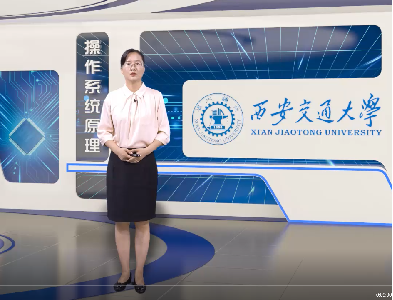
当前课程知识点:Finite Element Method (FEM) Analysis and Applications > 14、Project > Heat transfer analysis: transient problem of temperature field during steel cylinder cooling process > Video I-5
返回《Finite Element Method (FEM) Analysis and Applications》慕课在线视频课程列表
返回《Finite Element Method (FEM) Analysis and Applications》慕课在线视频列表
第5个Project是关于
钢制圆柱冷却过程的瞬态传热分析
对于一个直径为30mm,高度为60mm的钢制实心圆柱
它初始的温度是600度
假设它是均匀分布的
我们希望把它放置在一个温度为20度
换热系数是1200W每平方米度的介质中冷却
进行相应的热处理
我们来看一下
我们假设它的热传导系数随着温度变化
是这样的一个线性关系
比热的变化是这样的一个线性关系
圆柱冷却过程中
它随着时间变化,它的冷却情况、它的温度分布情况
是怎么样的一个形式
我们来进行有限元分析计算
对于这个问题它的要点也是
因为它属于一个轴对称问题
由于对称性的关系,我们就可以取1/4的横截面
作为计算模型,也就是这一部分
从这里可以看出来
下面这个面是绝热的
也就是我们所说的对称面
这个面和这个面是放置在冷却液中
也就是跟外界进行热交换的面
在建立相应的模型的时候
大家要注意统一对应的物理量的单位
这个模型我们采用的是PLANE77号传热单元
设置的时候注意
导热系数和热容是随温度线性变化的
在进行瞬态分析的时候
我们通过
可以设置初始温度为600度
再定义对应这个面的对流换热系数
因为我们希望获得冷却时间100秒以后
在整个时间分布上的温度变化情况
那么我们就可以通过
在后处理中
一般后处理的话
我们之前完成的是1/4的模型
我们就可以通过对称映射设置完成整个模型
也可以用矢量图来显示热流分布
然后在时间后处理中
我们还可以通过相应的命令得到
圆柱中心、侧表中间、端面的顶点上
它这个位置的温度随着时间变化情况
然后画出相应的温度变化曲线
我们先来看一下对应的命令流
命令流的关键主要在这
主要是要设置PLANE77号传热单元
然后在这是确定计算模型为瞬态分析
这个命令是设置圆柱的初始温度为600度
这个命令是设置换热边界条件
我们希望得到100秒内温度变化情况
所以这是时间的设置
这是我们设置计算子步的数目
这对应的是求解
求解完成了之后我们就进入后处理
对应的命令是
我们通过对称映射把1/4的模型
变成一个完整的模型
然后我们以矢量的方式来显示热流的分布情况
我们把之前的这部分命令拷到ANSYS平台
我们就可以看出来它热流的方向是怎样的形式
如果我们希望得到圆柱面和圆柱侧边
也就是我们所说的1号节点、2号节点
还有22号节点是圆柱侧边和端面的
随着时间的温度变化情况的变化的话
我们就要进入时序后处理模块
我们把这部分时序后处理模块的命令粘贴进去
从图中我们可以看出来
在圆柱中心内部
它开始的时候温度下降是比较慢的
随着时间的增加,到100秒的时候
它的内外温差相差不是很大了
-Finite element, infinite capabilities
--Video
-1.1 Classification of mechanics:particle、rigid body、deformed body mechanics
--1.1 Test
-1.2 Main points for deformed body mechanics
--1.2 Test
-1.3 Methods to solve differential equation solving method
--1.3 Test
-1.4 Function approximation
--1.4 Test
-1.5 Function approximation defined on complex domains
--1.5 Test
-1.6 The core of finite element: subdomain function approximation for complex domains
--1.6 Test
-1.7 History and software of FEM development
--1.7 Test
-Discussion
-Homework
-2.1 Principles of mechanic analysis of springs
--2.1 Test
-2.2 Comparison between spring element and bar element
--2.2 Test
-2.3 Coordinate transformation of bar element
--2.3 Test
-2.4 An example of a four-bar structure
--2.4 Test
-2.5 ANSYS case analysis of four-bar structure
--ANSYS
-Discussion
-3.1 Mechanical description and basic assumptions for deformed body
--3.1 Test
-3.2 Index notation
--3.2 Test
-3.3 Thoughts on three major variables and three major equations
--3.3 Test
-3.4 Test
-3.4 Construction of equilibrium Equation of Plane Problem
-3.5 Test
-3.5 Construction of strain-displacement relations for plane problems
-3.6 Test
-3.6 Construction of constitutive relations for plane problems
-3.7 Test
-3.7 Two kinds of boundary conditions
- Discussion
-- Discussion
-4.1 Test
-4.1 Discussion of several special cases
-4.2 Test
-4.2 A complete solution of a simple bar under uniaxial tension based on elastic mechanics
-4.3 Test
-4.3 The description and solution of plane beam under pure bending
-4.4 Test
-4.4 Complete description of 3D elastic problem
-4.5 Test
-4.5 Description and understanding of tensor
-Discussion
-5.1 Test
-5.1Main method classification and trial function method for solving deformed body mechanics equation
-5.2 Test
-5.2 Trial function method for solving pure bending beam: residual value method
-5.3 Test
-5.3How to reduce the order of the derivative of trial function
-5.4 Test
-5.4 The principle of virtual work for solving plane bending beam
-5.5 Test
-5.5 The variational basis of the principle of minimum potential energy for solving the plane bending
-5.6 Test
-5.6 The general energy principle of elastic problem
-Discussion
-6.1Test
-6.1 Classic method and finite element method based on trial function
-6.2 Test
-6.2 Natural discretization and approximated discretization in finite element method
-6.3 Test
-6.3 Basic steps in the finite element method
-6.4 Test
-6.4 Comparison of classic method and finite element method
-Discussion
-7.1 Test
-7.1 Construction and MATLAB programming of bar element in local coordinate system
-7.2 Test
-7.2 Construction and MATLAB programming of plane pure bending beam element in local coordinate syste
-7.3 Construction of three-dimensional beam element in local coordinate system
-7.4 Test
-7.4 Beam element coordinate transformation
-7.5 Test
-7.5 Treatment of distributed force
-7.6 Case Analysis and MATLAB programming of portal frame structure
-7.7 ANSYS case analysis of portal frame structure
-8.1 Test
-8.1 Two-dimensional 3-node triangular element and MATLAB programming
-8.2 Test
-8.2 Two-dimensional 4-node rectangular element and MATLAB programming
-8.3 Test
-8.3 Axisymmetric element
-8.4 Test
-8.4 Treatment of distributed force
-8.5 MATLAB programming of 2D plane rectangular thin plate
-8.6 Finite element GUI operation and command flow of a plane rectangular thin plate on ANSYS softwar
-Discussion
-9.1 Three-dimensional 4-node tetrahedral element and MATLAB programming
-9.2 Three-dimensional 8-node hexahedral element and MATLAB programming
-9.3 Principle of the isoparametric element
-9.4Test
-9.4Numerical integration
-9.5 MATLAB programming for typical 2D problems
-9.6 ANSYS analysis case of typical 3Dl problem
-Discussion
-10.1Test
-10.1Node number and storage bandwidth
-10.2Test
-10.2 Properties of shape function matrix and stiffness matrix
-10.3Test
-10.3 Treatment of boundary conditions and calculation of reaction forces
-10.4Test
-10.4 Requirements for construction and convergence of displacement function
-10.5Test
-10.5C0 element and C1 element
-10.6 Test
-10.6 Patch test of element
-10.7 Test
-10.7 Accuracy and property of numerical solutions of finite element analysis
-10.8Test
-10.8 Error and average processing of element stress calculation result
-10.9 Test
-10.9 Error control and the accuracy improving method of h method and p method
-Discussion
-11.1 Test
-11.1 1D high-order element
-11.2 Test
-11.2 2D high-order element
-11.3 Test
-11.3 3D high-order element
-11.4 Test
-11.4 Bending plate element based on thin plate theory
-11.5 Test
-11.5 Sub-structure and super-element
-12.1Test
-12.1 Finite element analysis for structural vibration: basic principle
-12.2 Test
-12.2 Case of finite element analysis for structural vibration
-12.3 Test
-12.3 Finite element analysis for elastic-plastic problems: basic principle
-12.4 Test
-12.4 Finite element analysis for elastic-plastic problems: solving non-linear equations
-Discussion
-13.1 Test
-13.1 Finite element analysis for heat transfer: basic principle
-13.2 Test
-13.2 Case of finite element analysis for heat transfer
-13.3 Test
-13.3 Finite element analysis for thermal stress problems: basic principle
-13.4 Test
-13.4 Finite element analysis for thermal stress problems: solving non-linear equation
-Discussion
-2D problem: finite element analysis of a 2D perforated plate
-3D problem: meshing control of a flower-shaped chuck
-Modal analysis of vibration: Modal analysis of a cable-stayed bridge
-Elastic-plastic analysis: elastic-plastic analysis of a thick-walled cylinder under internal pressur
-Heat transfer analysis: transient problem of temperature field during steel cylinder cooling process
-Thermal stress analysis: temperature and assembly stress analysis of truss structure
-Probability of structure: Probabilistic design analysis of large hydraulic press frame
-Modeling and application of methods: Modeling and analysis of p-type elements for plane problem

